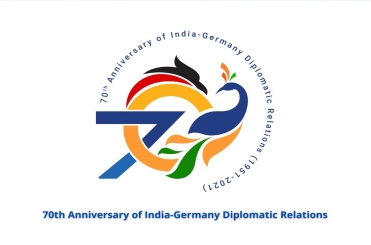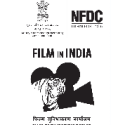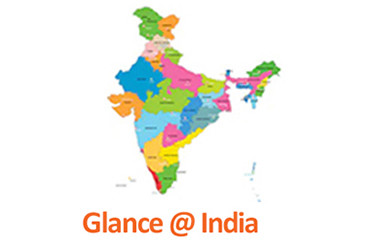- Home
- About Us
-
Consular Services
- Covid related travel requirements
- Resumption of Tourist Visa Services

- Instructions regarding entry into the consular Wing
- General Contact details
- Postal Applications
- Visa Services
- Passport Services
- OCI Information
- Renunciation of Indian Citizenship/Surrender Certificate
- Attestation,Consular and Misc.Services
- Weekly Open House
- MADAD - Consular Services Management System
- Indian Community Welfare Fund
- FAQs on Marital disputes involving NRI/PIO spouses

- Public Notices & Circulars
-
Embassy Wings
- Economic & Commercial Wing
- Contacts
- Overview of Indian Economy
- India-Germany Economic & Commercial Relations
- Doing Business in India
- Make in India

- Invest India

- Flagship Programs of Government of India

- Doing Business in Germany
- Trade Fairs
- Trade Dispute Advisory
- Foreign Investment
- Foreign Trade
- Newsletters

- Attestation of Documents

- Community Welfare
- Culture
- Information Wing/Media Center
- Science & Technology

- Political
- Consular
- Defence Wing
- Economic & Commercial Wing
-
Media Center
- e-books

- India Perspectives

- Documentaries

- Constitution Day 2022
- Calendar of Activities
- Press Releases
- News Articles
- Constitution Day
- Flag Code of India and Prevention Insults National Honour Act, 1971
- INDIA @THE UN SECURITY COUNCIL 2021-2022
- Important statements by policy-makers in India

- Photo Gallery
- Yoga

- e-books
- India-Germany Relations
- MIIM
- Useful Links
- Tenders
29 November 2017: Folk Music & Dance
|
Wednesday
29 November 2017
18:00 hrs
Auditorium |
|
Folk Music & Dance RABI O RUMI Approach to love and mysticism by Sankalita Mandal Vocals Subham Mukherjee dance |
Gitanjali was originally written by Rabindranath Tagore in Bengali and was later translated by himself into English. Gitanjali (‘Song Offerings’) brought him Nobel Prize for literature in 1913. The verses abound with devotional messages and ethereal delight and the ecstasy that vibrate through the poems gushes out with a profound love for God, nature and mankind. All the poems resonate with a celestial form of blitheness and have the power to usher the readers into a world of spiritual elevation.
Mysticism is a highly noteworthy feature in Gitanjali. Strains of mystic philosophy run through the words Rabindranath Tagore chose to deck his poems in this anthology. Mysticism stands for the idea of getting closer to God through contemplation and sensing the presence of God around humans in a way that most of the time remains beyond mundane or materialistic perceptions. Questing for the presence of God in God’s creations leads us to another philosophical arena—pantheism. Pantheism stands for believing in the presence of God in everything. Mysticism and pantheistic philosophy have been in practice by oriental as well as western authors and poets for hundreds of years. Beyond temporal and space borders, Rabindranath Tagore is definitely an eternal symbol of the human soul, irrespective of culture, religion or nationality. By travelling outside any self-imposed borders, we will always find ourselves inside a fascinating and eternal realm of love, spirituality and freedom, a land where all human beings are God’s perfect creation.
Rabindranath Tagore, a lover of beauty, had visions of dance movements that would complement his lyrics. He did not want to showcase any classical dance forms with the accompaniments of his lyrics. In fact, it was the other way round; he wanted the dances to be a fitting accompaniment to his songs – a very difficult proposition. Unless a person’s vision is aesthetic, one should refrain from choreographing dance to his lyrics. We hence celebrate this mystic path of delight through Tagore’s music through Dance.
A fellow of the Royal Geographic Society (London), having three Master Degrees in Geography, Subham Mukherjee is researching for PhD Degree in Berlin, at the Freie Universität. Away from Geography, he has a passion for dance, music and arts, having trained since the age of six. He specializes in Indian classical dance, Bharatnatyam, and has performed at various prestigious venues in the UK, European countries, China and India, including the British Museum, Lord’s Mayor’s office at London, Indian embassies in Germany, Hungary to name a few. His Special interest on Rabindra Nrtutya will be reflected on the performance where he dances on a medley of various Rabindra Sangeet themes as Inner-Pleasure!
Sankalita Mandal was born and brought up in Kolkata, India. She was raised in a family where music is not only a mean of entertainment, but a way of expression. Sankalita has always been surrounded with music, dance, poetry and literature. Her training in Rabindrasangeet as well as Indian classical music started in her early childhood. 2011, Sankalita moved to Germany for her higher studies.
........................................................................................................................................
Gitanjali wurde ursprünglich von Rabindranath Tagore in Bengali geschrieben und später von ihm selbst ins Englische übersetzt. Gitanjali brachte ihm 1913 den Nobelpreis für Literatur ein. Die Verse sind reich an frommen Botschaften und ätherischer Freude, und die Ekstase, die durch die Gedichte vibriert, ergießt sich in tiefster Liebe zu Gott, Natur und Menschheit. Alle Gedichte schwingen mit einer himmlischen Form der Aufrichtigkeit mit und haben die Macht, die Leser in eine Welt geistiger Erhebung hineinzuführen.
Mystik ist ein besonderes Merkmal in Gitanjali - sie durchzieht die Worte, die Rabindranath Tagore in dieser Anthologie für seine Gedichte verwendete. Mystik steht für die Idee, Gott durch Kontemplation näher zu kommen und die Gegenwart Gottes um die Menschen zu spüren, und zwar auf eine Weise, die die meiste Zeit jenseits von weltlichen oder materialistischen Wahrnehmungen bleibt.
Rabindranath Tagore, ein Liebhaber der Schönheit, hatte Visionen von Tanzbewegungen, die seine Texte ergänzen würden. Mit den Liedtexten wollte er keine klassischen Tanzformen zeigen. In der Tat war es umgekehrt - er wollte, dass die Tänze zu seinen Liedern passen würden - ein sehr schwieriges Unterfangen.
Als Stipendiat der Royal Geographic Society (London) forscht Subham Mukherjee für drei Master Degrees in Geographie an der Freien Universität in Berlin. Abseits der Geographie hat er eine Leidenschaft für Tanz, Musik und Künste. Er ist spezialisiert auf indischen klassischen Tanz, Bharatnatyam, und ist an verschiedenen renommierten Orten in Großbritannien, europäischen Ländern, China und Indien aufgetreten, darunter das British Museum, das Büro des Lord's Mayor in London, die indischen Botschaften in Deutschland und Ungarn, um nur einige zu nennen. Sein besonderes Interesse an Rabindra Nrtutya spiegelt sich in der Aufführung wieder, bei der er ein Medley aus verschiedenen Rabindra Sangeet-Themen tanzt.
Sankalita Mandal ist in Kolkata, Indien geboren und in einer Familie, in der Musik nicht nur Unterhaltung, sondern Ausdrucksform ist, aufgewachsen. Sie war schon immer von Musik, Tanz, Poesie und Literatur umgeben. Ihre Ausbildung in Rabindrasangeet (Tagore-Musik) sowie indischer klassischer Musik begann in ihrer frühen Kindheit.
|
Embassy of India Tiergartenstr. 17 10785 Berlin
Bus 200 Tiergartenstraße |
|
Free entry to all events for a maximum of 200 guests with valid Indian, German or other valid ID cards/passports having German stay permits. EU citizens may carry copies of their local registration certificate. Bags are not allowed. Information: 030-25795405
Freier Eintritt für maximal 200 Gäste mit gültigen indischen, deutschen oder anderen gültigen Personalausweisen/Reisepässen mit Aufenthaltsgenehmigung für Deutschland. Das Mitführen von Kopien ihrer örtlichen Anmeldebescheinigung ist für EU-Bürger notwendig. Taschen sind nicht erlaubt. Informationen: 030-25795405 |


























